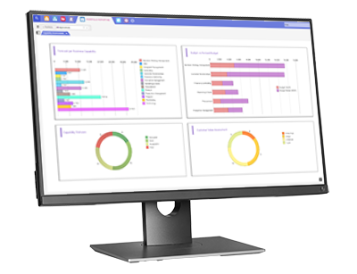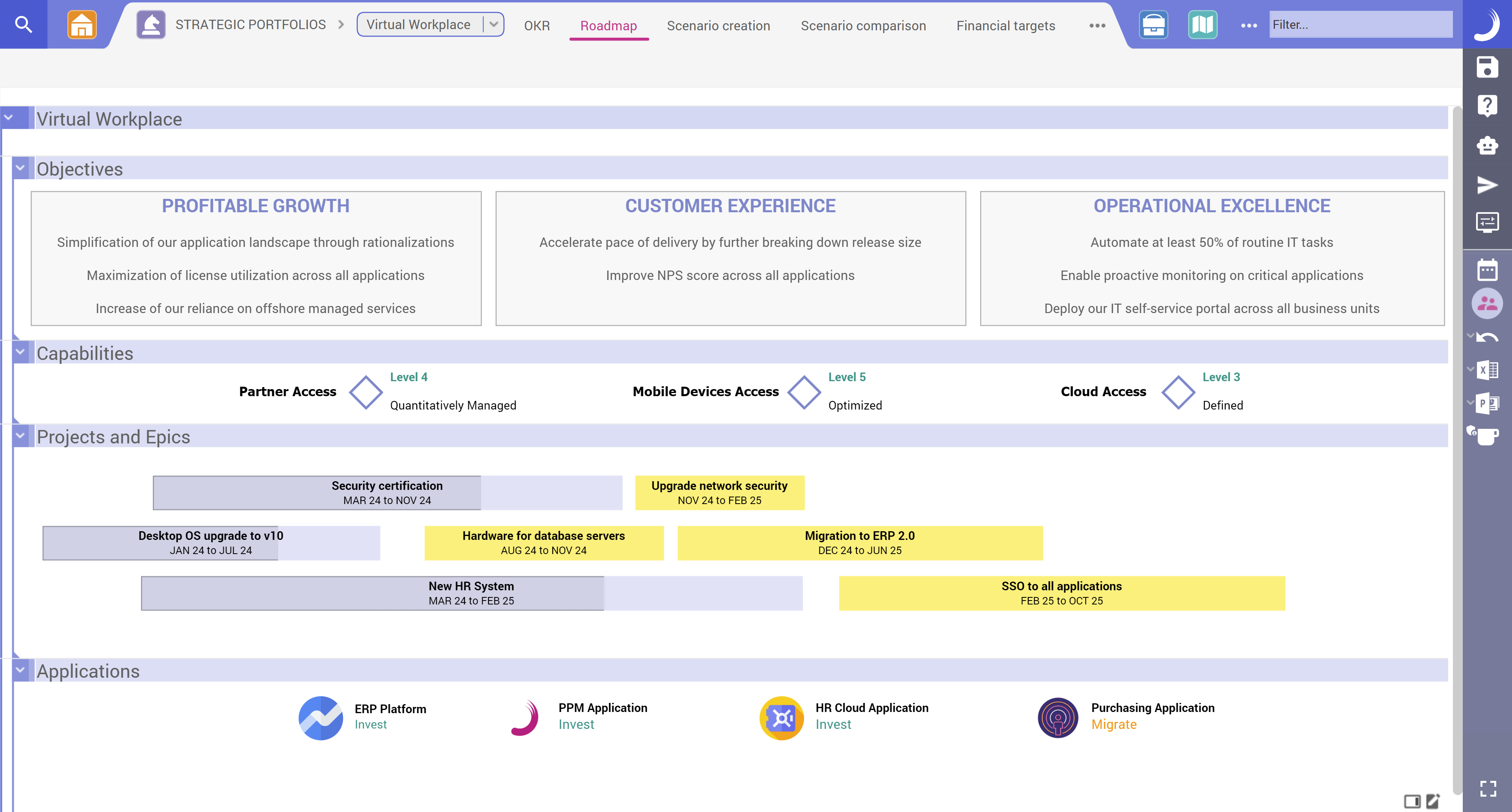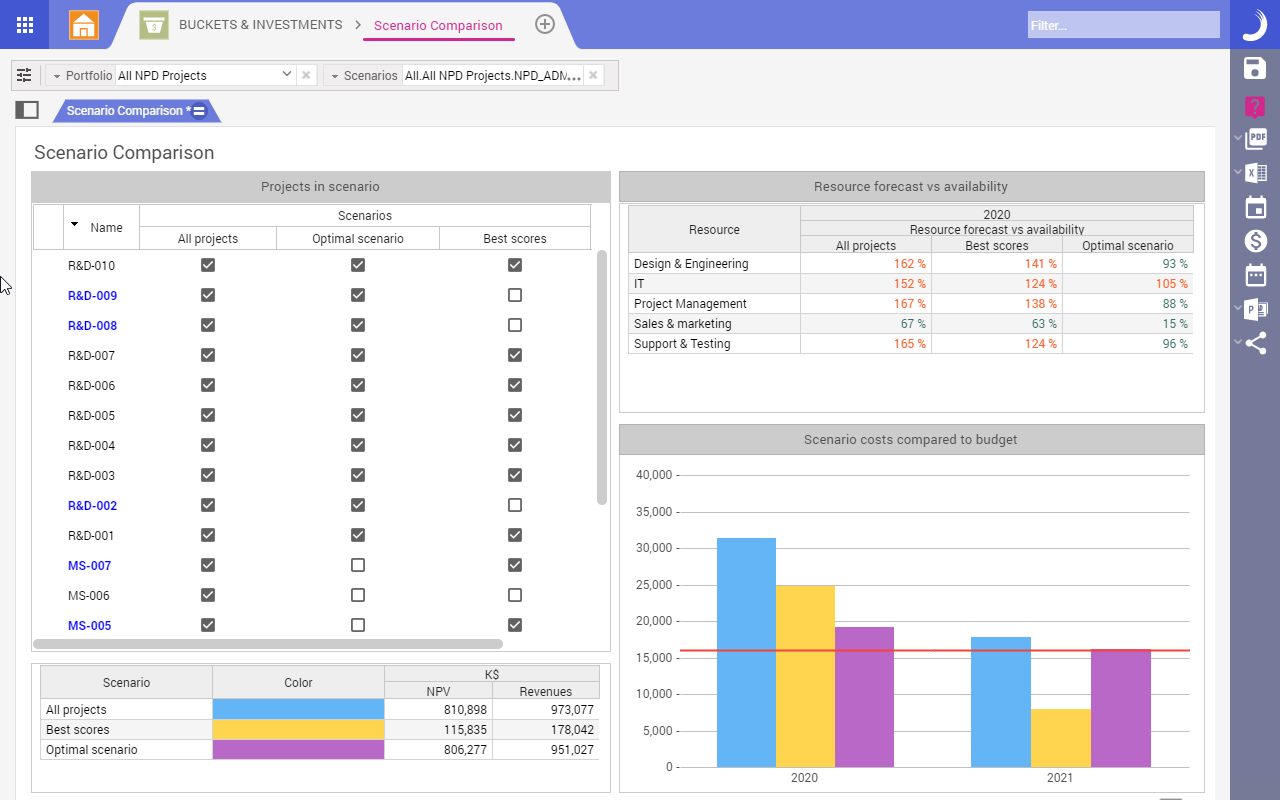Elevate Your IT Portfolio Management with Planisware by strategically selecting, prioritizing, and managing IT investments and assets to achieve business objectives. Evaluate and optimize the mix of projects, applications, infrastructure, and digital initiatives to deliver maximum value to the organization.
Unlock efficiency, innovation,
and strategic alignment in your IT landscape
Make relevant IT decisions
Cope with a rapidly evolving technology landscape, diverse stakeholder needs, and the necessity to balance innovation with stability. IT Portfolio manager must ensure that decisions are data-driven, consider the long-term implications, and maximize the value delivered to the business while minimizing risks.
Be cloud ready
Evaluate which applications and services can be migrated to the cloud, understand the impact on existing infrastructure, and ensure compatibility and security. IT Portfolio manager must develop a clear cloud strategy and roadmap to navigate these complexities.
Embrace Agile
Transform traditional project management practices, foster a culture of continuous improvement, and ensure effective collaboration among cross-functional teams. IT Portfolio manager must balance Agile’s iterative nature with the need for strategic planning and governance, ensuring that Agile initiatives align with overall business objectives and deliver tangible value.
Manage your IT budget
Manage your budget constraints, justify expenditures, and adapt the IT department to changing financial conditions. IT Portfolio manager must prioritize projects based on strategic value, manage cost overruns, and ensure transparency and accountability in spending.

e-book: IT Portfolio 101
Use cases
Your journey start with a comprehensive IT landscape that you then transform into business relevant assets.
IT landscape
Gain visibility into your IT landscape to prevent shadow IT, foster synergies, and identify useful applications. Benefits include replacing guesswork with facts, focusing on mission-critical initiatives, and understanding the impact of IT on sustainability choices.
IT Rationalization
Align IT assets with business requirements and optimize them in terms of cost, risk, and agility. Benefits include reduced costs through fewer licenses, integrations, and training needs, decreased security risks by removing old applications and technologies.
IT Modernization
Adopt AI and cloud-based infrastructure, drive digital transformation, boost efficiency, cut costs, and bolster security. Benefits include improved scalability to prevent disruptions and increased agility to respond swiftly to market changes to innovate.
Your IT Portfolio Process Steps
A solution to transform your business and address your digital transformation challenges.

Inventory / Registery of your IT landscape
Crowdsource collection of your IT assets inventory such as Application, Technology and Data. Map them to Business Assets such as Capabilities, Business Processes and Organizations. Understand dependencies and change impacts as well as the lifecycle of each IT assets.
Assess your IT assets and set portfolio level priorities
Categorize your applications to decide which one you should tolerate, invest, migrate or eliminate. Make sure your portfolio priority is aligned with business value and technical fit. Reduce security risks by embracing the latest technologies standards and monitor which IT assets support the business and contribute to your OKRs.
Allocate resource, execute the plan and monitor your transformation
Understand the level of maturity of your capabilities by people, process, technology, information and identify how projects contribute to your business capabilities. Prioritize projects based on cost, capacity and OKR achievements.

Brochure: IT Portfolio Management
Solutions & Practices
Application Portfolio Management (APM) is the practice of governing and optimizing inventories of software applications to achieve precise business objectives
Technology Portfolio Management is the practice of governing and optimizing technology dependencies to reduce security risks
Capability Portfolio Management (CPM) is the practice to focus on business differentiators, competitive advantage and IT alignment of the organization competences to deliver outcome.
Project Portfolio Management (PPM) is the practice that organizations use to manage and prioritize a collection of projects or initiatives to achieve specific business objectives.
Key Capabilities
Strategy & Portfolio Visualization
Expose the various elements through overview dashboards, strategy mapping, portfolio heatmaps, dependency mapping.


Planning & Funding
Facilitates the allocation of resources, including budget, personnel, and technology, to different projects and initiatives based on strategic priorities and objectives. Do budget forecasting including scenario planning to allows to create “what-if" scenarios.
Reports and analytics
Measure success with a variety of pre-built reports and dashboards, as well as the ability to create custom reports tailored to specific stakeholder needs and requirements. : See KPIs and OKRs related to portfolio health, project progress, resource utilization, and financial performance.


Integration and collaboration
Provides collaborative workspaces and communication tools, such as chat and discussion, to facilitate communication among stakeholders. Enables role-based access control to ensure that only authorized users have access to sensitive information and functionalities within the platform.